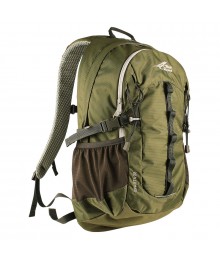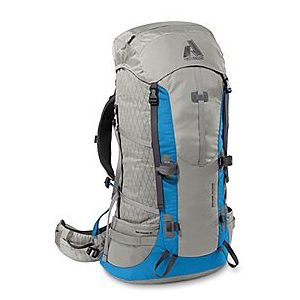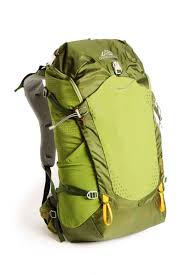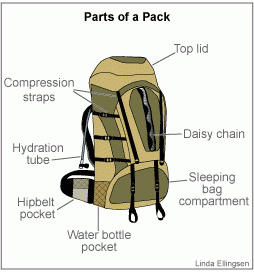Tips for choosing a hiking backpack

Hiking Backpacks
Backpacks need to be made of a water resistant fabric, be very durable, comfortable and the correct size for the number of items to be carried. Making sure that the backpack is comfortable and well adjusted is extremely important as, if this is done badly, the whole expedition can become very un-enjoyable.
Design: There are two major design criteria in Backpacks today. These have to do with how and if they have a frame i.e. external frame, internal frame or no frame. The other consideration is if it is a day bag or an expedition rucksack. Day bags are made for short outings and typically come in sizes up to 35 litres in capacity. They will also usually have no frame at all or may have a soft internal frame. Expedition bags come in sizes from about 40 litres up to 100 litres. They are used for long trips and either have an internal or external frame. Note that these expedition bags are then again divided into two fairly distinctive bag types. The actual bag itself either has lots of internal and external pockets so that items can be accessed easily. This type of design is useful for ordinary mountain walking. On the other hand, some people prefer a design where there is just a single huge compartment. These bags are common with mountaineers and climbers and are often about 50-60 litres in size and have internal frames. Most backpacks today are made of a water resistant material such as Cordura.
Note that this is not waterproof as it does allow for water to escape during dry times and so stops the internal area of the bag becoming mouldy and damp. Backpacks should also have wide, well padded shoulder and hip straps. The shoulder straps (upper point of attachment) must also be able to be moved up and down the back area of the bag. This allows for the bag to be fitted to different sizes of people.
Fitting the Backpack
Most expedition bags available in South Africa today are of an internal frame design and so this section only explains how to adjust a bag for internal frames. Firstly the internal frame needs to be moulded to take the shape of the wearer’s back. Do this by bending the frame while the bag is empty. Make sure that it fills the lower hollow of the back and curves around the shoulders. Then remember that the hip strap should take between about 50% and 70% of the overall weight carried. The upper attachment points of the shoulder straps can usually be adjusted up or down depending on the length of the wearer’s torso. The upper attachment should be at about the shoulder blade height of the wearer. There are straps that join the upper curve of the shoulder straps to the back of the main bag. These need to be fairly tight so as to hold the bag forward against the shoulder.

A well designed 20 litre day bag.

A large 65+ litre expedition bag.

A 35 litre day bag.
Packing a Backpack
The rule here is, “heavy high, light low”. This simple rule just helps to remind you that it is more comfortable to carry heavy items if they are pushing down on the upper shoulders and not hanging below the wearer’s back. Light items such as sleeping bags, spare clothing and a tent flysheet can be carried in the bottom of the bag. Heavy items such as tent poles, stove, fuel and food are carried in the upper area of the bag. There is always a danger of liquid fuels leaking and so these items are best carried in an external pocket within a sealed bag. The same goes for any other liquids that may leak. As backpacks are never fully waterproof it is a good idea to place sleeping bags and clothing in plastic bags or to fit a large garbage packet inside the bag before packing. Try to keep bad weather shell equipment near the top of the bag where they are easily accessible. Tent poles can be placed separately and vertically into the bag as this saves space. Make sure that maps and the compass are easily accessible.
